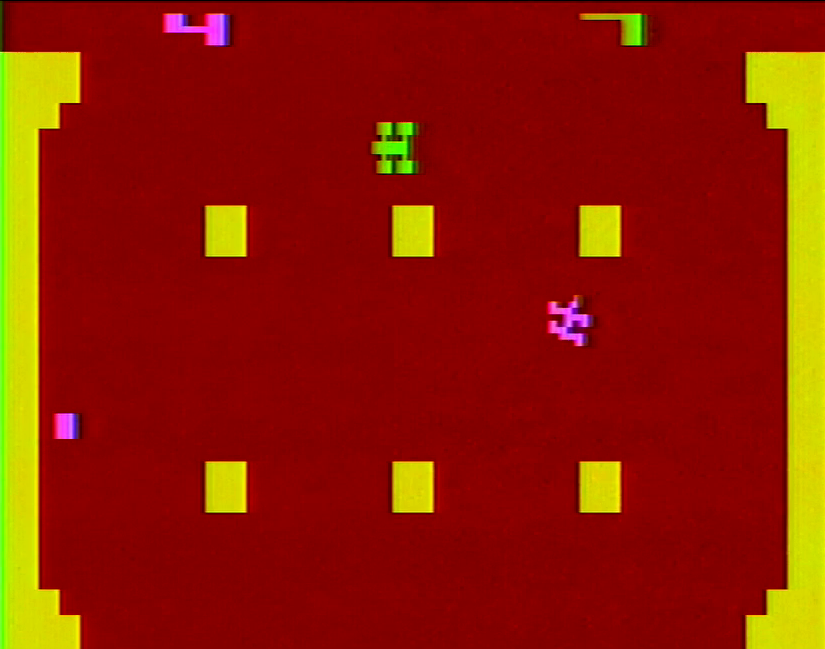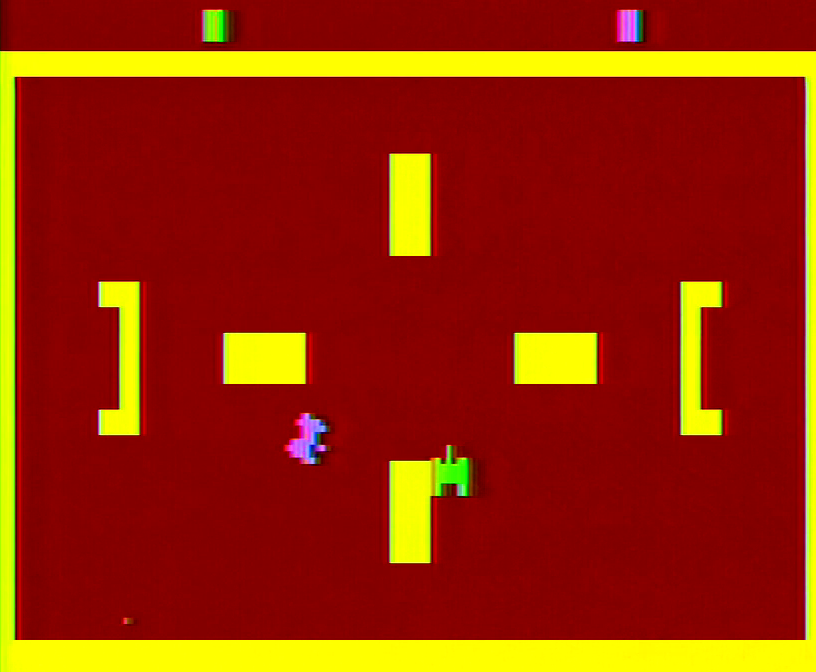
When the Atari VCS launched in 1977, there were two racing games that went out alongside it. Indy 500 is almost without question the better of the two, and features some of the best racing action on the platform in its lengthy life.
The overhead perspective and game mechanics seen in Indy 500 were pioneered by Atari in its March 1974 single-player arcade game Gran Trak 10, the company’s first true racing game. Gran Trak 10 was inspired by a pen-and-paper game called Racetrack published in the January 1973 edition of Scientific American. Developer Steve Mayer felt like the calculations used in that game to determine the movement of cars along a track could be used in a video game. Larry Emmons did the circuit design, and eventually Ron Milner came on board to help them finish the game, which included several firsts for arcade games: it’s the first game to use a ROM chip to store sprite data rather than hard-coding characters on the board. It’s the first game to use a dedicated monitor rather than repurposing a television, and it’s the first game to use interlaced video for its display. Essentially, the game will draw all the odd-numbered scanlines first and then circle back around for the even-numbered scanlines, which allowed for higher resolution and smoother animation. Despite all these innovations, Gran Trak 10’s production was a debacle, with manufacturing problems, pricing problems and expensive parts. The issues were great enough that even though the game sold around 10,000 units, Atari still took a hit in 1974 that put them $600,000 in the red. The game was nevertheless reportedly successful for arcade operators.

